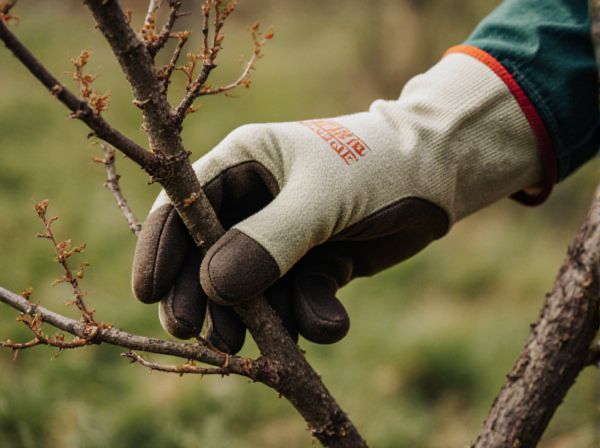
Dormant pruning vs summer pruning Illustration
Dormant pruning occurs during the plant's inactive season, typically in late winter, encouraging vigorous growth and helping to shape the plant for the upcoming growing season. Summer pruning takes place during active growth, targeting excess shoots and foliage to improve air circulation and light penetration, which supports fruit development and plant health. Understanding the timing and purpose of each technique enhances overall pruning effectiveness and plant productivity.
Table of Comparison
| Aspect | Dormant Pruning | Summer Pruning |
|---|---|---|
| Timing | Late winter to early spring | Mid to late summer |
| Purpose | Shape, remove dead wood, stimulate growth | Control size, improve light penetration, reduce vigor |
| Plant Response | Promotes vigorous spring growth | Limits excessive growth, encourages fruit production |
| Best For | Deciduous trees and shrubs | Fruit trees, ornamentals needing size control |
| Risks | Increased vulnerability to winter damage | Potential stress during hot weather |
| Tools | Pruning shears, loppers, saws | Pruning shears, hand pruners |
Understanding Dormant Pruning: Definition and Benefits
Dormant pruning involves trimming plants during their inactive winter phase, which helps minimize stress and reduces the risk of disease by allowing cuts to heal before active growth begins. This technique promotes stronger structural development and encourages vigorous new growth in the spring. Compared to summer pruning, dormant pruning is essential for maintaining plant health and improving long-term productivity.
Summer Pruning Explained: Purpose and Advantages
Summer pruning involves trimming plants during the active growing season to control shape, improve air circulation, and enhance fruit quality. This method reduces excessive foliage, allowing sunlight to penetrate and promoting better ripening of fruits. It also helps manage plant vigor, preventing overgrowth and encouraging more productive harvests.
Key Differences Between Dormant and Summer Pruning
Dormant pruning occurs during the plant's inactive season, focusing on removing dead or diseased wood to stimulate vigorous growth in spring, while summer pruning takes place when the plant is actively growing, targeting the removal of excess foliage to improve air circulation and light penetration. Dormant pruning encourages structural development and energy storage, whereas summer pruning controls size and shape, managing stress and reducing pest problems. Timing, objectives, and the impact on plant physiology represent the primary distinctions between dormant and summer pruning methods.
Timing Matters: When to Prune for Best Results
Pruning timing plays a crucial role in plant health and productivity, with dormant pruning typically performed during late winter to early spring when plants are inactive, minimizing stress and promoting vigorous growth. Summer pruning, conducted during active growth phases, helps control size, improves air circulation, and enhances light penetration but may reduce overall yield if done excessively. Selecting the right pruning time depends on the plant species and desired outcomes, ensuring optimal flowering, fruiting, and disease resistance.
Impact on Plant Health: Dormant vs. Summer Pruning
Dormant pruning, performed during winter when plants are inactive, minimizes stress and reduces the risk of disease by allowing wounds to heal before active growth begins. Summer pruning, conducted during the growing season, helps control growth and improve air circulation but can expose plants to infection and increased stress if done excessively. Choosing the appropriate timing for pruning directly impacts plant health by balancing wound recovery and growth management.
Recommended Tools for Each Pruning Season
Dormant pruning typically requires tools such as bypass pruners, loppers, and pruning saws designed for cutting thicker, woody branches when trees are inactive. Summer pruning favors lighter, precision tools like hand pruners and thinning shears for trimming new growth and maintaining plant shape without stressing active tissue. Selecting high-quality, sharp tools for each season ensures clean cuts that promote healthy plant recovery and optimal growth.
Tree and Shrub Types: Choosing the Right Pruning Method
Dormant pruning is ideal for deciduous trees and shrubs, as it promotes vigorous growth and shapes the plant during its inactive phase, typically in late winter. Summer pruning suits evergreens and flowering shrubs, helping to control size, enhance air circulation, and encourage blooms without triggering excessive new growth. Selecting the correct pruning method based on plant type ensures healthier development and optimal seasonal performance.
Pruning Techniques: Step-by-Step Approaches
Dormant pruning involves cutting back fruit trees during their inactive winter phase, targeting dead or overcrowded branches to promote healthy growth. Summer pruning requires selective removal of shoots and water sprouts to improve air circulation and sunlight penetration while directing the tree's energy toward fruit development. Both techniques emphasize cutting at the branch collar, maintaining proper angles, and using sterilized tools to prevent disease spread.
Common Mistakes in Dormant and Summer Pruning
Common mistakes in dormant pruning include cutting too late, which can lead to increased susceptibility to diseases and reduced fruit production. Summer pruning errors often involve removing excessive foliage, negatively impacting photosynthesis and overall plant vigor. Both pruning methods require precise timing and technique to avoid damaging plant health and yield.
Expert Tips for Successful Seasonal Pruning
Dormant pruning, performed during late winter or early spring, promotes vigorous growth by removing dead or diseased wood while summer pruning focuses on shaping and controlling the size of plants to enhance air circulation and light penetration. Experts recommend using sharp, clean tools and making precise cuts just above outward-facing buds to prevent damage and encourage healthy branch structure. Timing is crucial; dormant pruning triggers robust spring growth, while summer pruning helps manage excess growth and improves fruit or flower quality.
Dormant pruning vs summer pruning Infographic

 gardendif.com
gardendif.com